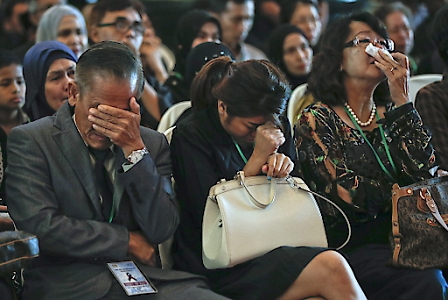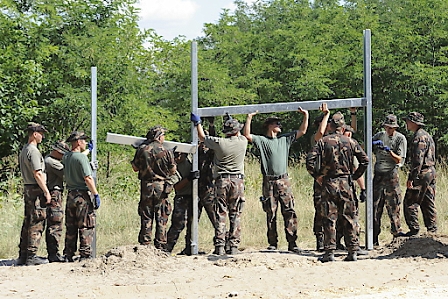Erstellt am: 17. 7. 2015 - 13:14 Uhr
Remembrance and Protection

EPA/FAZRY ISMAIL
MH17 - One Year Later
The relatives of the 295 people who perished when the Malaysia Airlines flight was shot down over a field in war-torn Grabovka, eastern Ukraine, have many questions that remain unanswered.
While the leader of Russian separatist forces in that region, Igor Girkin, was formally accused of orchestrating the shooting down of the commercial airplane this week, culpability on the part of Malaysian Airlines is also being considered.

EPA/PHOTOMIG
A case has been lodged against the airline on behalf of Reine Dalziel, whose husband Cameron was killed in the crash. The accusation: The carrier was negligent in using a route over eastern Ukraine at a time when it was an "internationally recognised conflict zone" (over which US airlines had been banned from flying and was also being avoided by other major international carriers).
Malaysia Airlines declared that at least 154 Dutch citizens were on board the passenger plane along with 27 Australian passengers, 23 Malaysian, 11 Indonesian, six from the UK, four from Germany, four from Belgium, three from the Philippines and one Canadian. The nationality of the rest of the victims was still to be identified. All the crew members were Malaysian.
The victims of the crash were not only those who were unfortunate enough to have been travelling from Amsterdam to Kuala Lumpur one year ago today. Just as the relatives and friends of those who died, so too have the residents of the region been forced to process the tragedy. This is a poignant account of how the villagers of Grabovka are dealing with the crash one year on.
Tony Cheng reported from the crash site one year ago and shares his insights with regards to the on-going investigation today.
Dieses Element ist nicht mehr verfügbar
The Hungarian Wall
Some are calling it a wall, some are calling it a fence, what it is for sure is a blocking off of a stretch of border between Hungary and Serbia.

EPA/MTI/ ZOLTAN GERGELEY KELEMEN
Not only are Hungarian soldiers building it, Hungarian prison inmates are helping in the construction of the 4 meter high fence. The construction is meant to take place at approximately 12 locations simultaneously along the 175 km border.
Das Interview von Chris Cummins mit Anna Magyar kann man hier auch nachlesen.
The idea is to stem the ever-increasing flow of migrants arriving by foot (mostly) from the Balkans. Anna Magyar is a Hungarian politician and a member of the National Hungarian Assembly (MP). She gave us her take on the Hungarian "Wall".
Dieses Element ist nicht mehr verfügbar


